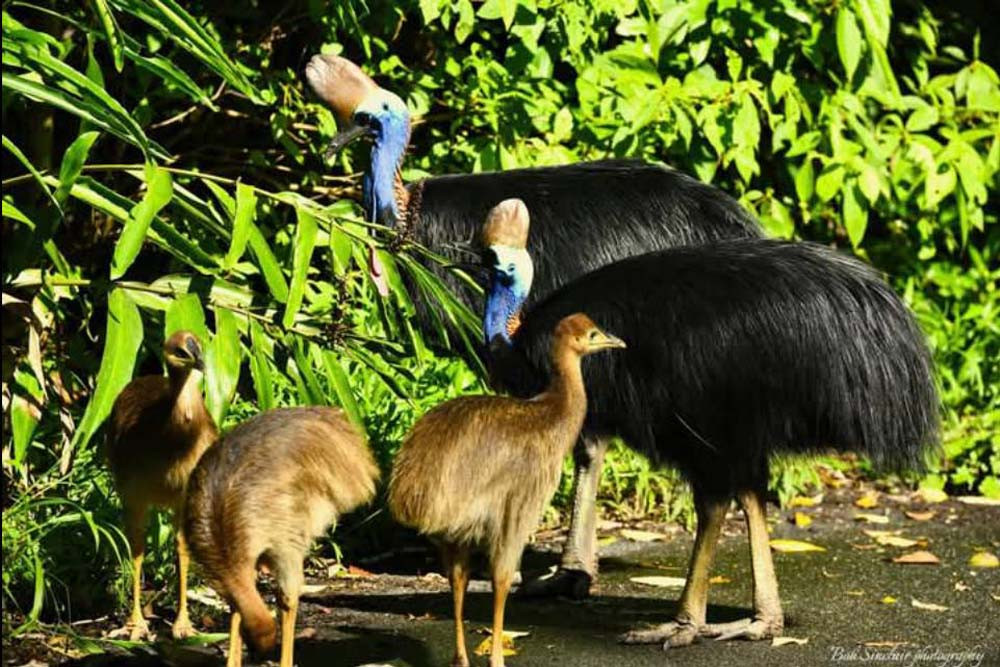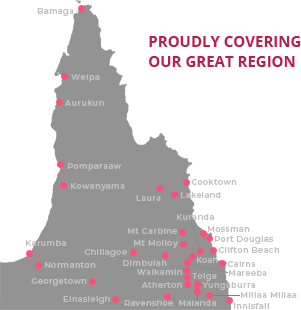Community & Business
13 April, 2025
Shock cassowary death sparks call for action
THE shocking death of a cassowary chick from the beloved and well photographed “Crater Crew” in the Mt Hypipamee National Park area near Wondecla has authorities and locals pleading with motorists to be more cautious.

The upsetting news has struck a chord with many locals who are now calling for action to prevent similar incidents to the endangered species in the future.
Innot Hot Springs resident Sarah Zipperer was the first passerby to notice the deceased animal on the road, which was said to have been struck by a vehicle towards the Telpara Hills section of the Mt Hypipamee National Park area.
“It was really heartbreaking. I love seeing the cassowaries up here, so it was very sad to come across a poor little chick dead in the middle of the road,” she said.
She reported the incident to the Department of the Environment, Tourism, Science and Innovation (DETSI) and was instructed to leave the deceased animal by the road where it was found.
Ms Zipperer, along with Tableland Snake Catchers, who have publicly voiced their concerns, lodged requests to both Tablelands Regional Council and the Department of Transport and Main Roads (TMR) to implement and reinstall signage in the area.
“I’ve spoken to TRC to reinstall two signs into Mt Hypipamee Crater Road that were removed about five years ago,” Leslie Brown of the Tableland Snake Catchers said.
“In the area where the chick was killed, there is no signage. So, I’ve also contacted TMR with approximate GPS locations of where the incident occurred.
“We need permanent road signage and a reduced speed limit in this area to stop this happening again.”
TMR said it was aware of a male cassowary with chicks in the area where the incident occurred and that the department took cassowary protection very seriously.
“The department takes the issue of cassowary protection very seriously and are working with the Cassowary Recovery Team (CRT) to reduce the risk of cassowary road strikes and improve road safety, in line with our Cassowary Conservation Management Plan,” a spokesperson said.
“There are a number of treatment options available for wildlife protection on Queensland roads, including the installation of signs, pavement marking, fencing, and so on.
“The Queensland Road Safety Technical User Volumes: Guide to Speed Management acknowledges that changing speed limits arbitrarily, where standards are not met, usually results in inconsistent driver behaviour and compliance issues and can actually reduce safety for road users.
“TMR continues to monitor cassowary risk in this area and will reassess the benefits of permanent signage based on the latest information.”
DETSI confirmed they were notified of the unfortunate incident and said rangers were sent to put up multiple signage stating there had been a recent cassowary crossing sighting in the area.
This is a mandatory protocol that takes place after a cassowary sighting is reported.
Cassowary sightings in north Queensland should be reported to Queensland Parks and Wildlife Service by calling 1300 130 372.
Suggestions to reduce the risk of cassowary road strikes can be put forward to DETSI, which will forward relevant information to TMR and CRT members as required.
DETSI can be contacted on 13 74 68 or via www.detsi.qld.gov.au


